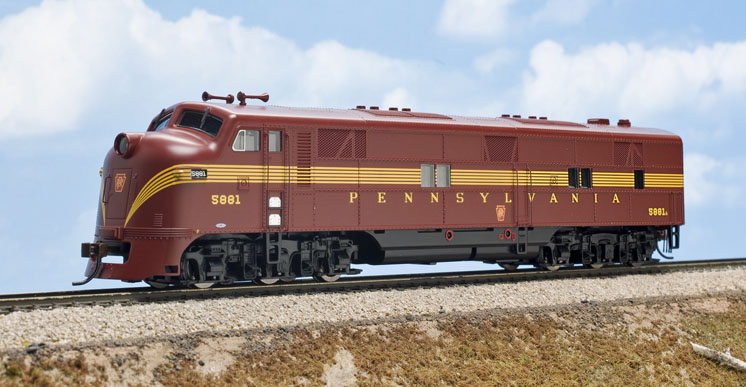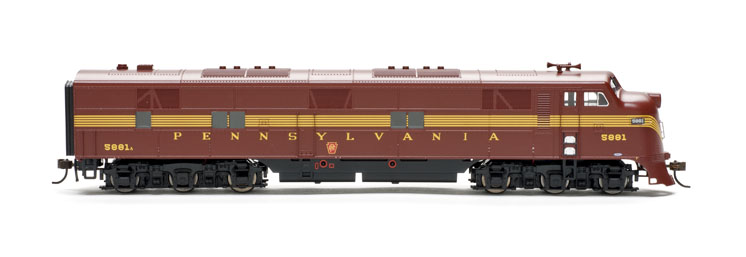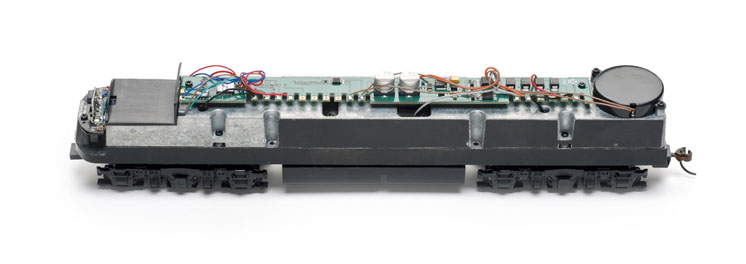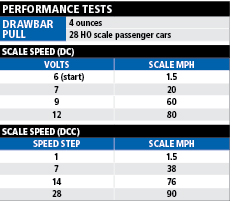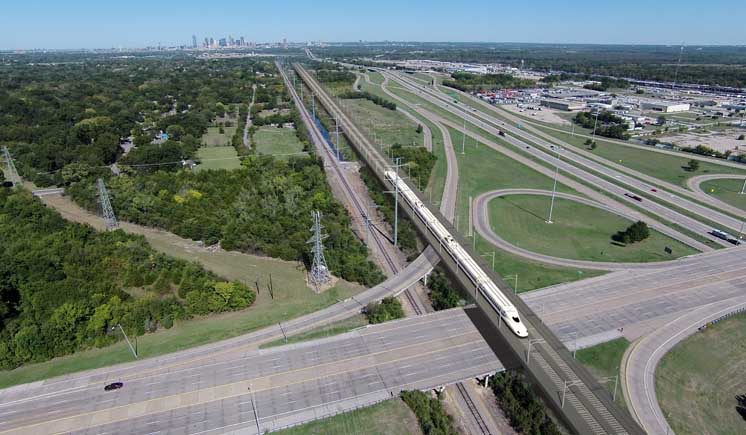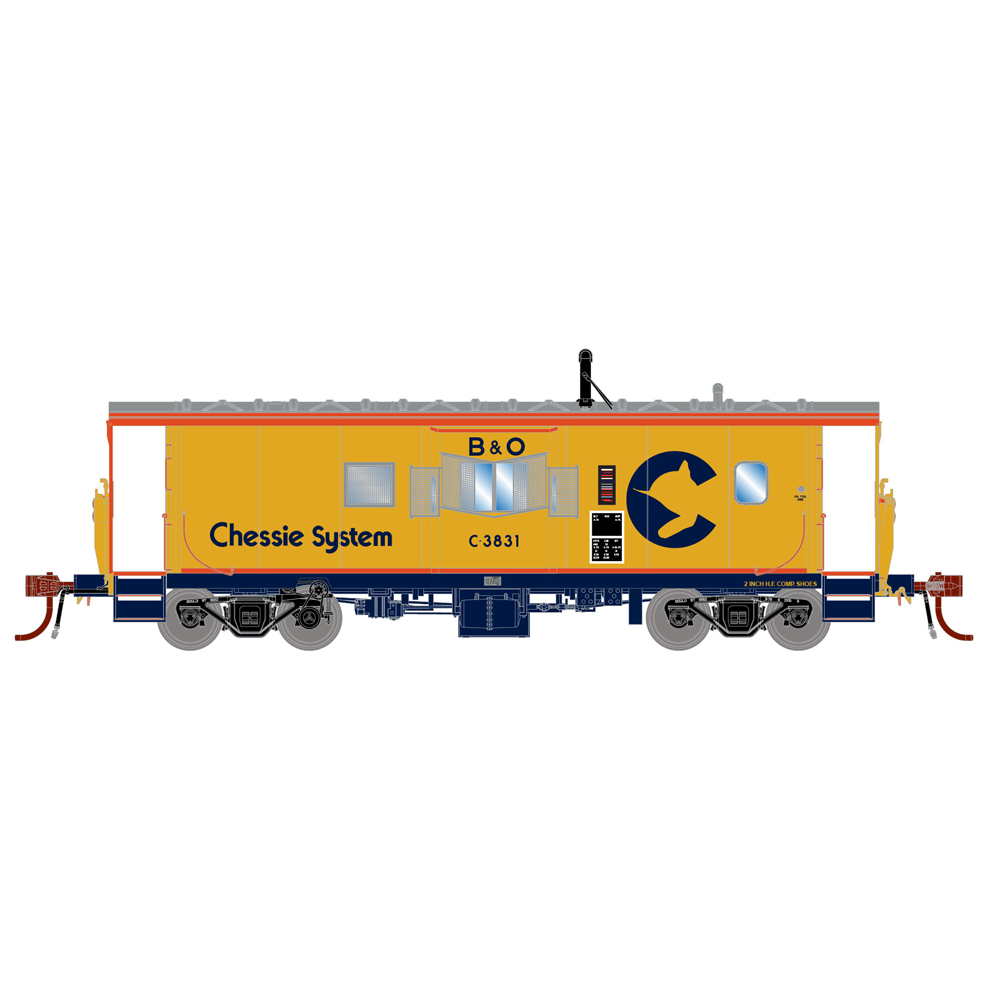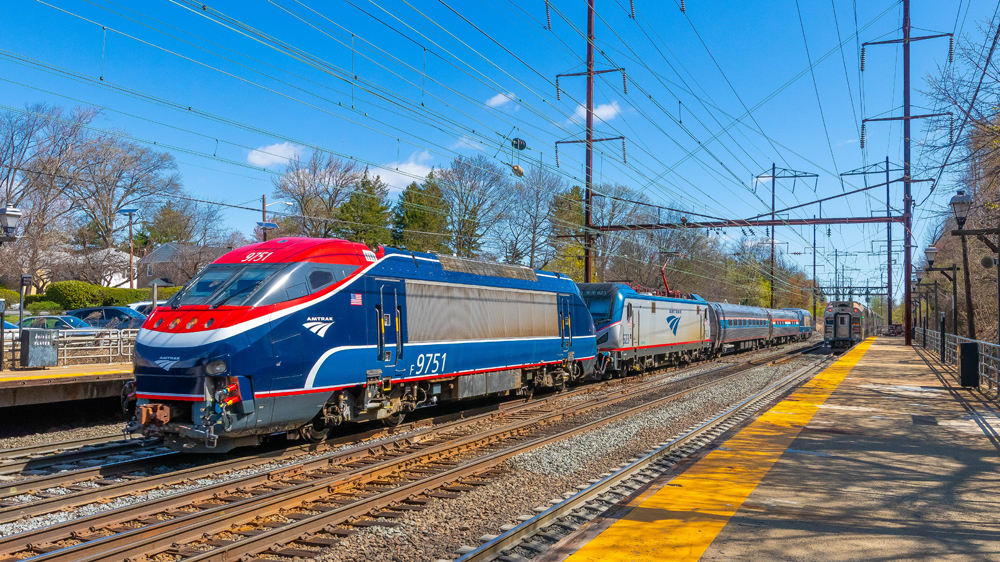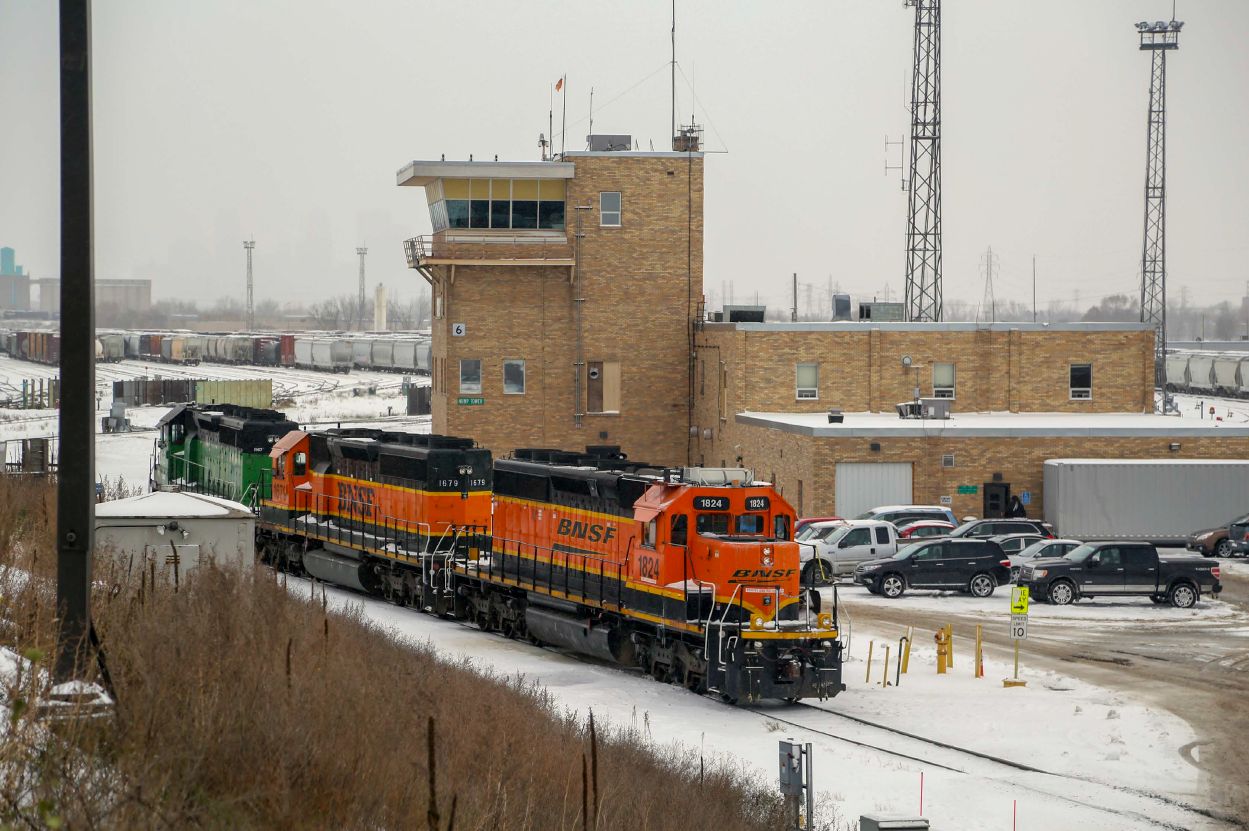For those modeling passenger service in the last half of the 20th century, General Motors’ Electro-Motive Division E-units are essential. This EMD E7A from Bachmann Trains would make a fine addition to an HO diesel roster. The model captures the lines of its sleek postwar prototype and comes in a version equipped with Bachmann’s dual-mode SoundValue decoder, which was developed in conjunction with SoundTraxx.
Prototype. From 1945 to 1949, EMD produced 428 E7A (cab equipped) and 82 E7B (cabless booster) diesel-electric locomotives for railroads across the United States. The E7A locomotives had the same side panels as earlier E3 and E6 locomotives, but had the more blunt “bulldog” nose that would be found on later E8 locomotives as well as EMD’s F unit freight diesels.
Like other E units, the E7A rode on six-axle trucks in an A-1-A configuration with two drive axles and an unpowered idler axle between them. For its prime mover, the E7 used two 12-cylinder 567A diesel engines that produced a combined 2,000 hp.
Delivered in 1945, a pair of E7A locomotives had the distinction of being the first road diesel-electric locomotives to serve on the Pennsylvania RR. Over the next few years Pennsy purchased more E7s than any other railroad. Designated the EP20 class on the PRR, the roster totaled 60 E7 locomotives, including both A and B units. Some of the EP20s soldiered on during the Penn Central and Conrail years.
Pennsylvania no. 5901 is the sole surviving E7A and is on display at the Railroad Museum of Pennsylvania in Strasburg, Pa.
The model. The dimensions of the Bachmann E7A match prototype drawings in The Model Railroader Cyclopedia: Vol. 2, Diesel Locomotives (Kalmbach Publishing Co., out of print). The model’s well-defined molded detail, including rivet seams and grills, matches the drawings as well as prototype photos.
Separately applied detail parts include the airhorns, windshield wipers, and handrails. There is clear window glazing in all the cab and side windows. Bachmann offers a few body shell variations to match specific roadnames. The shell on our review sample matches no. 5881 as it was delivered, with small numberboxes. Also correct for the Pennsy prototype is the single headlight above the nose door.
As delivered in the late 1940s, the E7s were painted with Dark Green Locomotive Enamel and five gold pinstripes. Our review sample is decorated as the prototype appeared after being repainted in the early 1950s with a a Tuscan Red body and five Buff pinstripes running along the sides. With “PRR” inside the keystone herald on the nose door and no striping across the side window glass, the paint scheme on the Bachmann model resembles that of a PRR passenger diesel painted after 1953. However, at that time, the EP20s would have started to receive larger number boxes and train-phone antennas, which aren’t on the model.
The lettering and striping matches prototype photos. Initially, the PRR five-stripe version of the model is available only in one road number. Hopefully Bachmann will add other road numbers, as the EP20s commonly ran in pairs or multiple units.
Mechanism. After removing the front coupler, I carefully lifted off the plastic locomotive shell. The die-cast metal chassis consists of two halves that enclose the flywheel-equipped motor. The main printed-circuit (PC) board, which includes the SoundValue decoder, runs along the top of the weight. A smaller PC board on the front of the chassis includes a surface-mount light-emitting diode (LED) for the headlight. A downward-facing round 28mm speaker in a plastic enclosure is attached to the rear of the chassis.
Truck-mounted gearboxes transfer power from the motor to all six axles. All-wheel drive and almost 1.5 pounds of weight make the Bachmann E7A a powerful puller. Single-handedly, the locomotive can pull 28 free-rolling passenger cars on straight and level track. The E7A also pulled nine passenger cars up our layout’s 3 percent grade.
All-wheel electrical pickup and an 18″ minimum radius allowed the locomotive to easily handle the tightest curves and yard ladders of no. 5 and no. 6 turnouts.
DC performance. After I applied 5V to our DC test track, I heard the sound of the dual 567s rumble to life. The rpm level increased and decreased with the throttle setting. All the sound effects are automatic, including forward (two toots), reverse (three toots), and stop horn (one toot) signals, as well as a bell that rings when the E7A travels at less than 10 scale mph. The sounds are momentarily interrupted whenever the direction switch is flipped, which I found distracting.
The model rolled smoothly at 1.5 scale mph with 6V applied to the track and accelerated to 80 scale mph at 12V. A prototype E7 could be geared for 85, 92, 98, or 117 mph top speeds.
DCC performance. The locomotive also featured smooth performance on our DCC test track, as shown in the charts at right. I could adjust configuration variables (CVs) to fine-tune the locomotive performance by customizing speed tables and adding acceleration and deceleration momentum.
A list of all the decoder’s supported CVs are available on the Bachmann website. Additional programming information can be found in the Tsunami user manuals at www.soundtraxx.com.
The decoder has the same excellent sound quality and much of the functionality of a Tsunami decoder. Although there aren’t any brake or coupler sounds, user-triggered features include important effects like the bell, headlight, dimmer, and short and long horn blasts.
I also easily set the decoder for manual notching, which allowed me to use function buttons to increase or decrease the engine rpm sounds independently from the throttle setting.
The SoundValue decoder doesn’t have the built-in equalizer of the Tsunami, but I still appreciated that I could easily set the volume level for each supported sound effect. This let me make sure that I could always hear the horn above the sound of the engine.
The decoder supports programming on the main as well as on the programming track. I easily changed the decoder address to match the locomotive number. I also advance consisted the model to run with another manufacturer’s SoundTraxx Tsunami-equipped E unit.
With realistic sound and exceptional pulling power, the Bachmann SoundValue E7A would look right at home hauling a streamliner along an HO scale main line.
Price: $299 (DCC sound), $199 (DC, no sound)
Manufacturer
Bachmann Industries Inc.
1400 E. Erie Ave.
Philadelphia, PA 19124
www.bachmanntrains.com
Era: 1945 to 1980s
Road names
DCC with sound: Pennsylvania (five-stripe, Tuscan); Baltimore & Ohio; Chicago, Burlington & Quincy; New York Central; Southern. DC with no sound: Atlantic Coast Line, Louisville & Nashville, Milwaukee Road, PRR (single stripe, Tuscan), Union Pacific
Features
▪▪All-wheel drive and electrical pickup
▪▪Die-cast metal chassis
▪▪Eight-pin DCC socket (DC version)
▪▪Can motor with dual brass flywheels
▪▪Light-emitting diode (LED) headlight
▪▪Minimum radius: 18″
▪▪Plastic E-Z Mate Mark II knuckle couplers at correct height
▪▪RP-25 contour metal wheels in gauge
▪▪Weight: 1 pound 7.5 ounces





